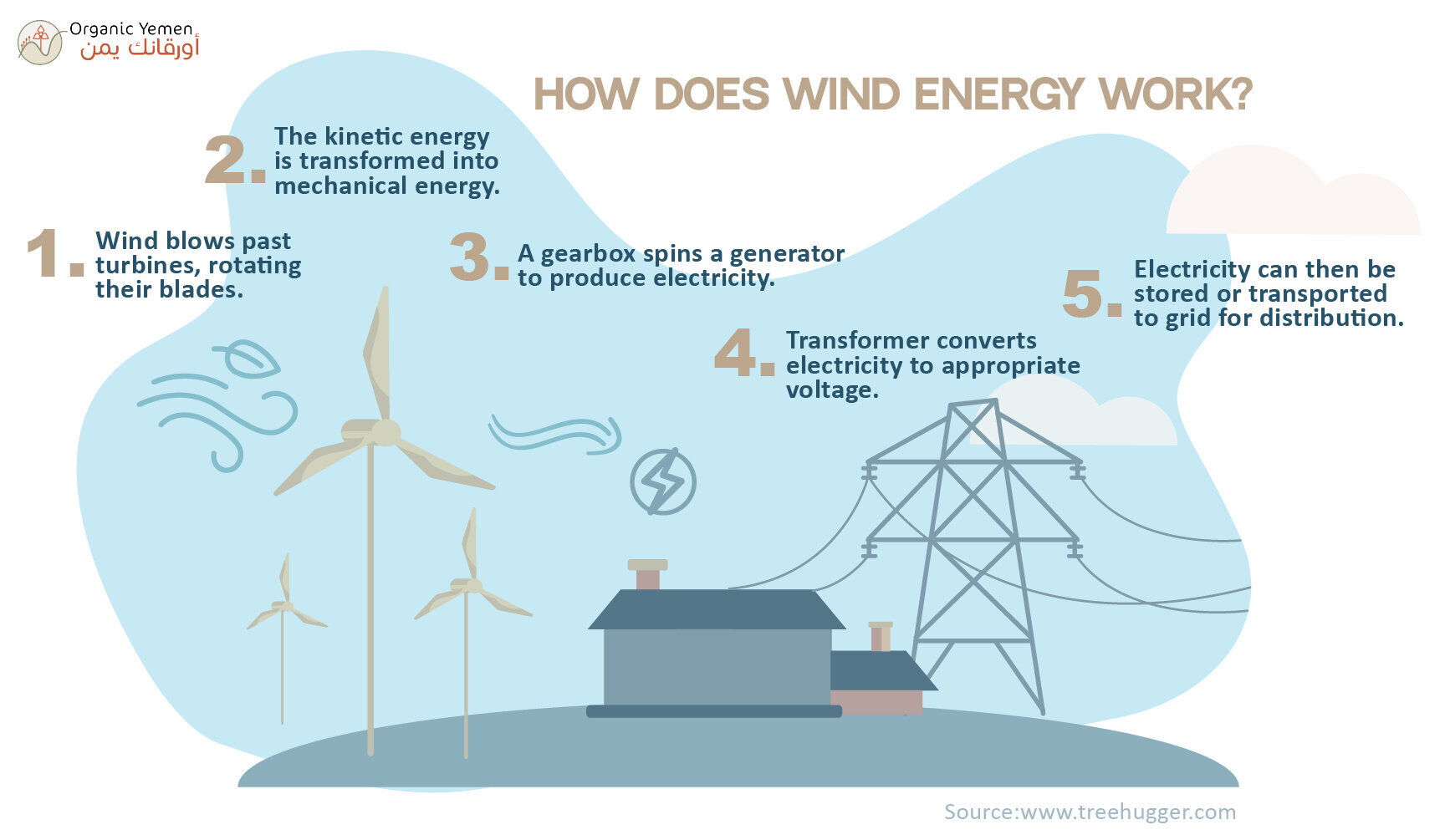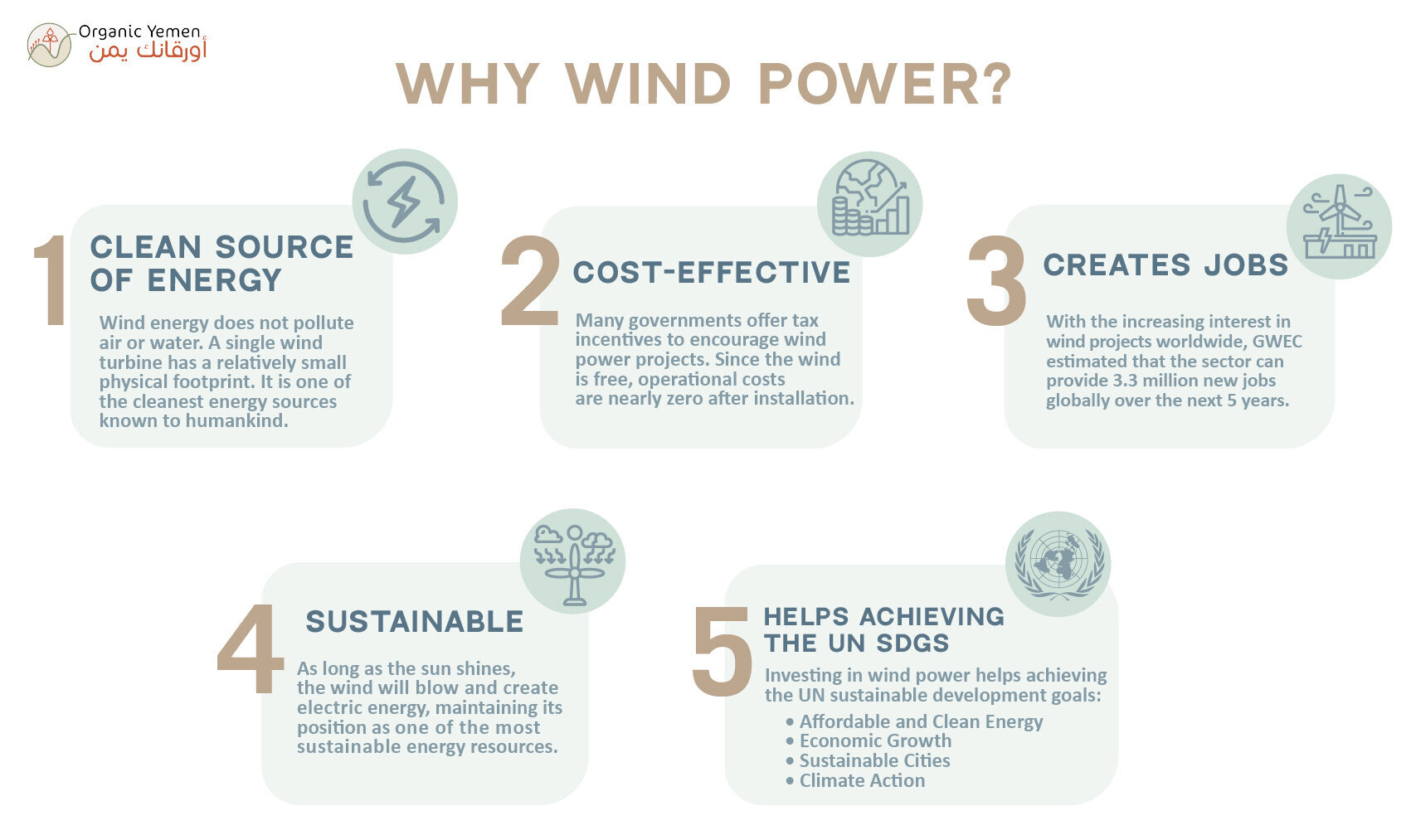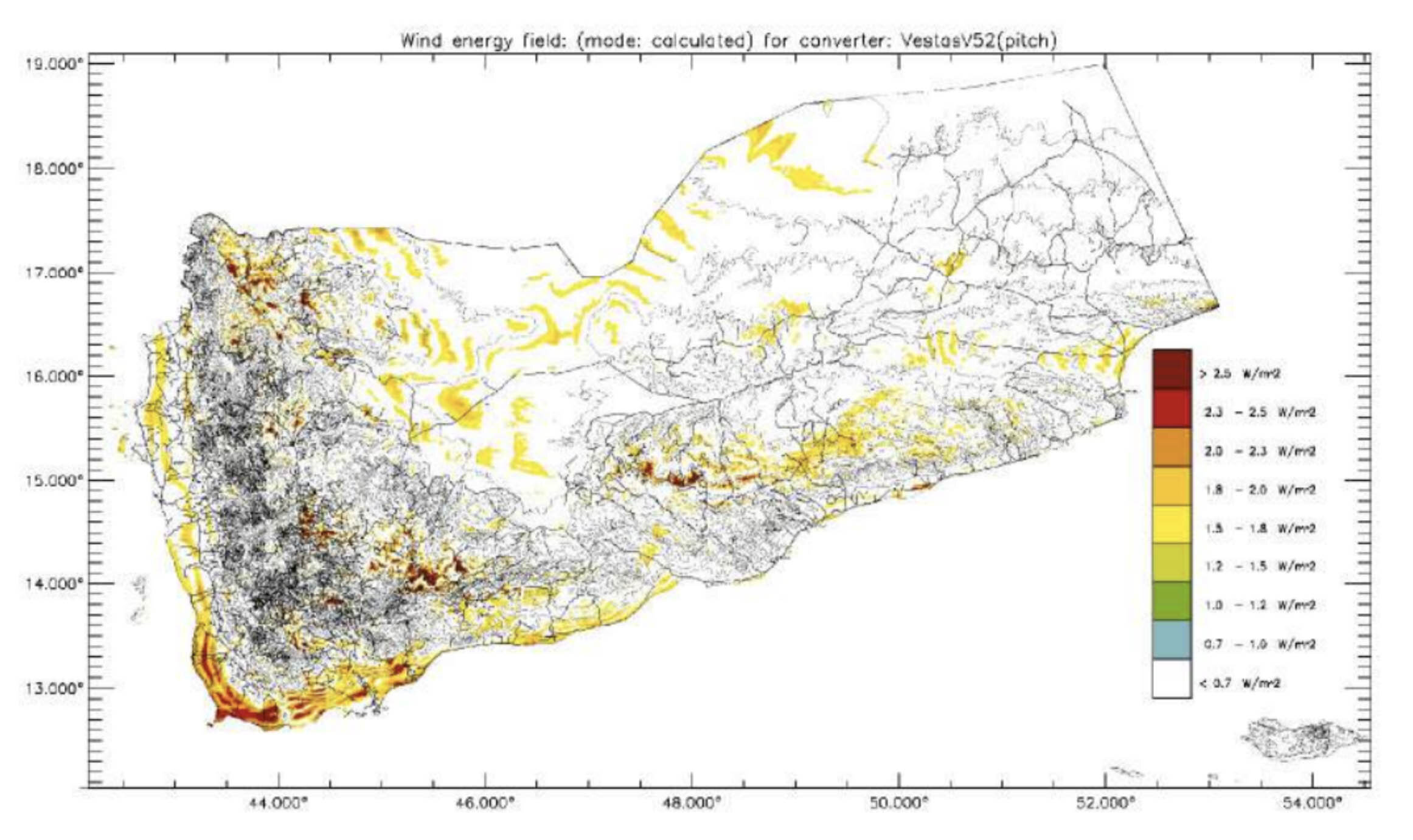Can Yemen be the next frontier in wind power investments?
July 2021 was the hottest month, not of the year, not of the decade. It was the hottest month on record. This year in Yemen, floods and droughts have damaged infrastructure, destroyed homes, displaced thousands and caused fatalities. With climate change hitting harder than ever, the world is turning to clean energy for slower global warming effects, and wind power is high on the list of renewable energy resources.
While most of the Yemeni population lack access to electricity, the country’s economic, social and industrial development are at stake. Since Yemen has vast wind power resources and potential, the way out can also be wind energy.
Organic Yemen: introducing our wind energy solutions
In this article, we will explain why Yemen can be the next frontier in wind power investments, and explore Organic Yemen’s services for wind energy projects. But first, let’s answer some big questions.
What is wind energy?
To start with, wind is a form of solar energy. It is created by the uneven heating of the earth’s atmosphere by the sun, and then modified according to the earth’s rotation and its topography irregularities.
Wind energy or wind power is the process by which wind is used to generate mechanical power or electricity.
How do wind turbines work?
Wind turbines convert the kinetic energy of air currents into mechanical power, which can then be used in tasks such as water pumping or converted into electricity using a generator.
To put it simply, wind turbines do the opposite of what fans do. Instead of using electricity to make wind, they use wind to make electricity.
We are talking about one of the cleanest and most sustainable energy resources, and that is why:
Wind is the new trend
2020 was a record year for wind power
While 2020 was a terrible year for climate change indicators, it was the best year in history for the global wind industry, according to the Global Wind Energy Council (GWEC). Despite the COVID-19 crisis, 2020 witnessed the installation of 93 GW of new wind capacity, achieving a 53% year-on-year increase. That makes the current wind power capacity worldwide 743 GW, which can help avoid 1.1 billion tonnes of carbon dioxide globally. In other words, this capacity can protect the world from one year of South America’s carbon emissions.
However, more growth is needed to reach the necessary pace to avoid the worst scenarios of climate change. As per the 2019 Future of Wind Report, there is growing consensus on the key role that wind energy would play in the energy mix in the next decades. The International Renewable Energy Agency (IRENA) expects a three-fold increase in the global installed capacity of onshore wind power by 2030 (to 1 787 GW) and a ten-fold growth by 2050 (to 5 044 GW) compared to worldwide installations in 2018 (542 GW).
In 2019, the global wind energy market was valued at $62.1 billion. Today, it is projected to reach $127.2 billion by 2027, growing at a CAGR of 9.3% from 2020 to 2027. Wind, solar and other renewables will account for about 30% of the world’s electricity supplies by 2040, as per the British multinational oil company BP estimates. Onshore and offshore wind alone would generate more than 35% of total electricity needs by 2050, according to IRENA.
Given the global race to achieve the Paris Agreement goals, more and more impact and ESG investors are looking for renewable energy investing opportunities, especially in emerging markets, including the promising Yemeni market.
But why is this increasing interest in wind energy in particular?
Why wind power?
1. Wind is a clean source of energy
With no emissions like power plants that rely on fossil fuels, wind energy does not pollute air or water. A single wind turbine has a relatively small physical footprint.
While some locals may complain about the turbines' noises or their aesthetic pollution, wind remains one of the cleanest energy sources known to humankind. That is also why several governments and organizations have been doing research studies on how to address the minor impacts caused by wind turbines.
2. Wind power is cost-effective
While the turbines’ upfront costs can be relatively high, mass production and technology advances have been driving the prices down. Also, many governments offer tax incentives to encourage wind power projects. Since the wind is free, operational costs are nearly zero after installation. Even maintenance costs can be generated by the turbines themselves as they are a long-term investment that can cover its expenses over time.
3. Wind creates jobs
As of today, the current 751 GW wind power capacity installations have already employed 1.2 million people worldwide. With the increasing interest in wind projects and expansion plans all over the world, GWEC estimated that the industry can provide 3.3 million new jobs globally over the next five years only.
4. Wind is sustainable
Remember how wind is created? It is actually a form of solar energy. So, for as long as the sun shines and the earth rotates, the wind will blow and produce electric energy, maintaining its place as one of the most sustainable energy resources ever.
5. Investing in wind power helps achieving the UN SDGs
The Sustainable Development Goals (SDGs) were adopted by the United Nations in 2015 as a universal call to action to end poverty, protect the planet, and ensure that by 2030 all people enjoy peace and prosperity.
An impact investing in wind power would address the following SDGs:
Affordable and Clean Energy (goal number 7)
Economic Growth (goal number 8)
Sustainable Cities (goal number 11)
Climate Action (goal number 13)
The Sustainable development goals achieved by investing in wind power
Why wind power in Yemen?
Whether you base your evaluation on the existing needs, market potentials or expected returns, Yemen will always win as a promising market for wind energy projects. Here is why we believe Yemen can be the next frontier for wind power investments.
1. Wind energy can meet Yemen’s electricity needs
Up until 2015, only 40% of Yemen’s population had access to electricity. Many of these privileged people still suffered from long-lasting power cuts due to the gap between generation and loads as well as the vandalism of power lines and plants.
Today, only 10% of the country is connected to the public electricity grid, while most Yemenis lack reliable access to electricity. This darkness affected people’s everyday lives, but most destructively, made Yemen Middle East’s weakest country in terms of economy, education, trade and tourism.
Fortunately, wind power can address this dire need for electricity in Yemen. Not only can wind farms power large cities but also smaller wind turbines can generate sufficient electricity to meet the needs of small-scale organizations, including hospitals, businesses, agriculture projects and more.
2. Yemen has abundant wind resources
Yemen's western shoreline, from Bab Al-Mandab to Al-Mokha, rates among the windiest corridors worldwide. Overall, Yemen’s coastal plains and some of its mountain areas have excellent wind conditions, with wind speeds that exceed 7.5 m/s. Combine that with power densities of over 200 w/m², which are suitable for power development. The result is a total technical potential of 14,200 MW, providing about 42,300 GWh of electricity per year, according to a 2009 report by Yemen’s Ministry of Electricity and Energy (MEE).
In 2021, the MEE estimated that Yemen can theoretically produce 17 - 19 GW of wind power, which will not only make the country rich in energy but will also enable it to sell energy to its neighbors.
3. Wind power projects are one form of impact investing in Yemen
Impact investments are the type of investments intended to achieve not only financial returns but also, and most importantly, positive social and environmental impacts. Since renewable energy offers so many social and environmental benefits, it is, indeed, one of the most attractive sectors for impact investors.
According to the Global Impact Investing Network, energy was one of the top three sectors to which impact investors deployed capital in 2018. What type of energy better addresses impact investing goals? Yes, renewable energy. And where is impact investing most needed? Probably the country with the largest humanitarian crisis in the world? It is Yemen.
Investing in wind power projects in Yemen would contribute to:
meeting Yemen’s dire needs for electricity, while reducing climate change effects
creating new jobs to help decrease Yemen’s unemployment rate, which reached over 13% in 2020
boosting the struggling Yemeni economy by attracting more investments to the country
reviving the education, tourism, agriculture and industrial sectors in Yemen
4. Wind power investment is farmer-friendly
Wind turbines can be built on existing farms or ranches, which will provide farmers and landowners with extra income to help them during tough times. While farmers will still work the land and raise livestock as the turbines do not take up much space, they will generate additional income by renting a fraction of their land. The rental amount can make up for economic dips caused by draughts, floods or crop price fluctuations.
“I would say the absence of financial stress has been a real game-changer for me,” said Tom Cunningham, an American landowner who has three wind turbines on his land. Cunningham tells USA Today: “The turbines make up for the (crop) export issues we’ve been facing.”
Organic Yemen:
your ideal partner for wind power investments in Yemen
Interested to explore Yemen’s untapped market with great potential for wind energy investments? Organic Yemen (OY) is ready to share its team’s expertise and quality weather data to help you with feasibility studies and more.
Once candidate sites for wind farms are identified, ground-level surveys are needed to prove the financial viability of the wind power projects. With our vast experience in weather stations and wind LiDAR installations, we can provide wind data analysis that is needed to set up monitoring stations. These stations would in turn help obtain further data, without which financial backing is impossible to get.
Organic Yemen has already worked with the international renewable energy consultants, KEO, to assess the feasibility of a mountain location to provide power to a nearby city. We have also been in discussion with local companies to use smaller (5 - 10 kw) wind turbines to power their operations. Moreover, we are ready to use our strong relationships with local authorities to support your wind energy investments and undertake detailed feasibility projects.










